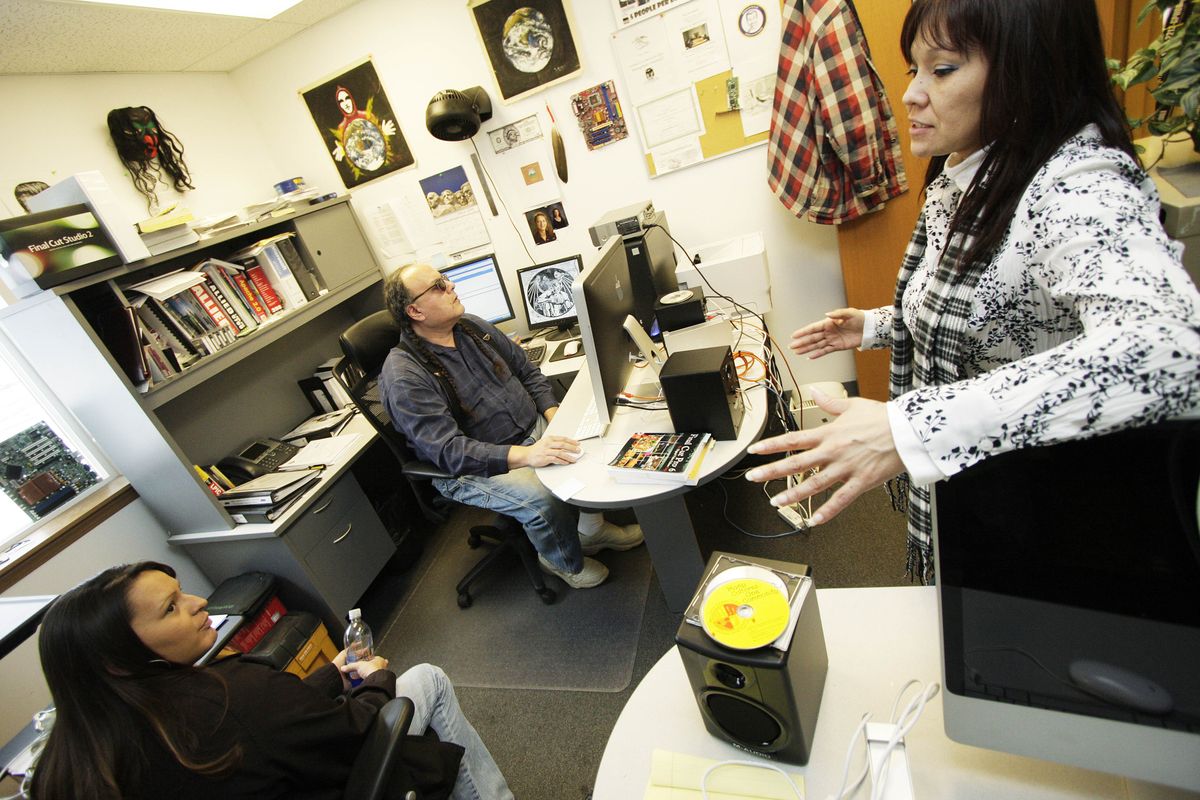Video site offers portal for Web-savvy Indians

PLUMMER, Idaho – What do Native Americans wear on weekends? Hopeedee asked a series of white people.
Feathers, furs and buffalo skins were the replies.
What do Native Americans do on weekends? Hopeedee, a 35-year-old Indian woman, asked.
Run buffalo off cliffs, one person offered.
The videotaped comments were from Hopeedee’s recent posting on RezKast, a sort of YouTube for Indians operated by the Coeur d’Alene Tribe.
RezKast offers a mix of the silly and the serious, including videos of Indian religious and cultural ceremonies, comedy bits, sporting events, travelogues and music videos, all from a Native American perspective.
It’s part of the Coeur d’Alenes’ commitment to making their people computer-savvy, said Valerie Fast Horse, director of information technology for the 1,900-member tribe.
“There are very few tribes doing this,” Fast Horse said. “I have very few peers in Indian country.”
RezKast was launched in July and has about 200 active posters, including Indians from across the United States and Canada, Fast Horse said.
Recent comedy offerings include a raunchy television weather report from a forecaster named “Red Cloud,” a promo for a false television show called “C.S.I., Regina,” and a video ad for “Indian Wal-Mart,” which turned out to be a series of garbage trash bins. There also was a version of the “Twelve Days of Christmas” sung to the pounding of Indian drums and featuring “six Indian tacos.”
A regular poster to RezKast is Hope Mathews-Herrera, of Oklahoma City, who said she goes there when she gets a “powwow jones.”
“I really like this site because you don’t have to wade through all the clutter,” the Comanche and Wichita Indian said. “There is a certain comfort zone here. It’s the only truly interactive site out there that is actually for Natives by Natives, an actual nation.”
RezKast is not alone. Other specific sites for Indians include MyTribalSpace.com and Native American Tube. But RezKast is the best for sharing videos, she said.
“I feel that just seeing ourselves online and interacting with other Natives can only strengthen our identity as Native Americans, which is important for urban Indians,” Mathews-Herrera said.
Fast Horse graduated from North Idaho College in computer science and joined the U.S. Army, where she worked in information management, including a tour in Operation Desert Storm. She decided she wanted to return to the reservation and bring the digital world to the tribe’s reservation.
Fast Horse, a tribal council member, worked to secure a $2.8 million federal grant in 2002 that allowed the tribe to provide wireless service across its 345,000-acre reservation. That work was done by 2005, Fast Horse said.
The tribe set up a large computer lab with 40 work stations. It’s free to use the computer lab, although members must pay to have broadband access at home.
The lab is swamped with users after school and has become a regular school bus stop, she said.
The tribe offers computer classes to members, including training on how to produce videos.
Fast Horse had long envisioned having a site where Indians could exchange videos. “We needed a portal for our own people,” she said. “We needed a place to aggregate our content.”
The Coeur d’Alenes have made great strides in the past decade, opening a lucrative casino and other businesses that employ many tribal members. Fast Horse believes the wireless access will now help the tribe develop knowledge-based businesses as well.
The broadband service, called Red Spectrum, is also a source of revenue for the tribe, as non-tribal members in towns around the reservation are subscribing, she said.
“We want to use technology to preserve our culture and language,” she said.